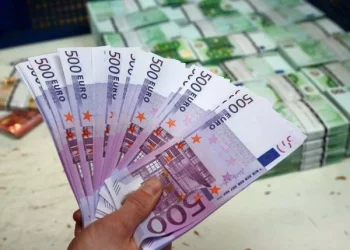In the early European session on Tuesday, the gold price made a comeback, recovering some of its previously lost ground and reaching around $3,255. This movement comes as traders across the globe hold their breath in anticipation of the US April Consumer Price Index (CPI) inflation report, which is scheduled for release later on the same day. The precious metal’s price, denoted as XAU/USD, edged higher during this period. However, a sense of caution prevails among traders, with many choosing to remain on the sidelines until the critical data is revealed. Adding to the complexity of the situation is the recent optimism sparked by a trade deal between the United States and China, which threatens to limit the potential upside for gold.
Gold Rebounds
The announcement of a temporary agreement between the US and China to reduce import tariffs has significantly improved risk sentiment in the market. Under this deal, the US will slash the extra tariffs it imposed on Chinese imports in April this year, reducing the rate from a hefty 145% to 30%. In return, China will lower its duties on US imports from 125% to 10%. These new measures will be in effect for 90 days. Additionally, Reuters reported on Tuesday that the US will also cut “de minimis” tariffs on Chinese shipments from 120% to 54%, with a minimum flat fee of $100 remaining. Giovanni Staunovo, an analyst at Swiss bank and London bullion clearer UBS, pointed out that “The de-escalation of tensions between China and the US is reducing the demand for safe haven assets like gold.” This means that as the trade war eases, the appeal of gold as a safe-haven investment diminishes, potentially dragging its price lower.
Trade Impact
While the trade deal is a significant factor, gold traders are primarily focused on the upcoming US CPI inflation data. This report is expected to provide valuable insights into the future policy path of the US Federal Reserve (Fed). Analysts predict that the headline CPI will show a year-on-year increase of 2.4% in April, while the core CPI is projected to rise by 2.8% YoY for the same period. Swap markets have already priced in the Fed’s first 25 basis points (bps) rate cut for the September meeting and anticipate two more rate reductions by the end of the year. Just last week, the markets were indicating three cuts this year, with the first one possibly as soon as July. Geopolitical developments also play a role in the gold market’s dynamics. India’s Prime Minister Narendra Modi stated on Monday that operations against Pakistan have been put on hold, with the future course of action depending on Pakistan’s behavior. Meanwhile, Ukrainian President Volodymyr Zelensky expressed his readiness to meet Russian President Vladimir Putin this week, shortly after US President Trump urged him to “immediately” accept Putin’s offer for peace talks in Turkey. Any signs of escalating geopolitical tensions could reignite the demand for safe-haven assets, giving a boost to the price of gold.
Gold Surges Ahead
Looking at the longer – term picture, the gold price maintains a positive tone. On a daily timeframe, the constructive outlook for the precious metal remains intact, as the price continues to hold above the crucial 100-day Exponential Moving Average. However, market analysts caution that further consolidation or a temporary sell-off cannot be ruled out. This concern is supported by the fact that the 14-day Relative Strength Index (RSI) is currently positioned below the midline. On the upside, traders have their eyes set on the first barrier at $3,347, which is the high recorded on May 9. If there is sufficient follow-through buying above this level, it could open the door to $3,432, the upper boundary of the Bollinger Band. Beyond that, the next significant hurdle lies at the all-time high of $3,500. In the event of a bearish turn, the $3,200 psychological level serves as the initial support for XAU/USD. Further downside could see the price test the additional support at $3,142, which was the high on April 2.
Related topics



























